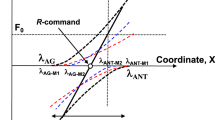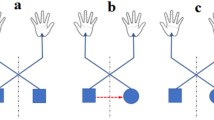Abstract.
The present study explored the effect of different movement orientations on the arm end-effector kinematic features, levels of muscle activity and intermuscular coordination between shoulder and elbow muscles during cyclical movement. Subjects were instructed to trace cyclical lines with their dominant arm along vertical, horizontal, and right (low inertia) or left diagonal (high inertia) orientations. EMG activity from the biceps, triceps and anterior and posterior deltoids were monitored along with the displacements of the end-effector of the arm. The results suggested a differential role for the shoulder versus elbow muscles in the manipulation of the hand end-effector trajectory. The activity in the shoulder flexors was predominantly in anti-phase with that of the shoulder extensors and was therefore presumed to manipulate the global features of the trajectory. Biceps and triceps tended to show less orchestrated activity and were therefore assumed to be responsible for making the fine adjustments and to compensate for intersegmental interactions. The most pronounced differences in kinematics and EMG features among the four principal movement orientations were observed between the two diagonal orientations, which differed profoundly in arm inertial resistance. The findings converged upon the principle of 'inertial anisotropy,' as previously identified for discrete movement, suggesting that the central nervous system did not fully preplan the actual kinematic requirements of cyclical task performance. Moreover, inertial anisotropy was evident in spite of the fact that movement was performed under temporal constraints (metronome pacing) and with availability of a visual template of the task, suggesting that enhancement of the feedback loop did not fully eliminate these effects.
Similar content being viewed by others
Author information
Authors and Affiliations
Additional information
Electronic Publication
Rights and permissions
About this article
Cite this article
Levin, O., Ouamer, M., Steyvers, M. et al. Directional tuning effects during cyclical two-joint arm movements in the horizontal plane. Exp Brain Res 141, 471–484 (2001). https://doi.org/10.1007/s002210100874
Received:
Accepted:
Issue Date:
DOI: https://doi.org/10.1007/s002210100874




